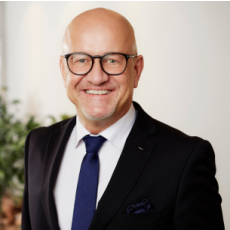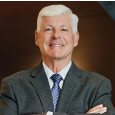SKF is a Swedish bearing and seal manufacturing company founded in Gothenburg, Sweden in 1907. It supplies various aerospace solutions from bearings, seals, rods, and precision elastomeric devices for airframe, aero-engines, and gearboxes.
You've been with SKF for nearly 37 years, joining straight after university in the 80s. What stands out as the biggest change during your time there?
SKF is an old company—117 years—so we’re not known for rapid change. That said, we’ve been adapting continuously over time. Our structure has remained fairly constant, but the big shift has been the globalization of our operations. We have a strong presence worldwide—3,000 employees in Sweden alone, and about 40,000 globally, including significant growth in Asia, especially China, over the past 20 years.
However, what’s really changed in the past 10 years, is the geopolitical tension and a move toward regionalization. This shift is not just political, but also practical, driven by supply chain efficiencies and reducing lead times. While we were once heavily Europe-centric, we're now balancing out, working to become more self-sufficient in each region. This shift has accelerated significantly in recent years.
SKF supplies products to over 40 industries. How significant is the aerospace portion, and is that changing?
Aerospace makes up around 5-6% of SKF’s total sales. While it's a smaller segment, it’s a big focus area, particularly under my leadership, which oversees about 25% of SKF's operations. What’s unique about aerospace is the complexity and specificity of its products, requiring a full end-to-end value chain in one organization. For example, we have entire teams dedicated to aerospace, covering everything from manufacturing to sales. It’s similar for industries like marine.
Last year you conducted a strategic review of your aerospace business. How have the conclusions of the review informed your key markets and customers?
In aerospace, we mainly focus on two areas: aero engines and airframes. We supply aero engines to major players like GE, and for airframes, we work with companies like Airbus. Bearings are critical in both segments, from the high-speed rotation in engines to the oscillating movements in airframes—aileron, flaps, and landing gear, for instance.
We also serve helicopters, which have both jet engines and gearboxes, with bearings throughout their rotor linkages. These components are very different from what you’d find in an aero engine, so we’ve structured our aerospace business around these distinct product categories.
How is SKF Aerospace adapting to the development of aeronautical technologies to achieve its carbon-neutral objectives for 2030 and beyond?
Our roadmap involves a few key focuses. First, we’re heavily investing in making our factories net zero by 2030. We’ve set targets for scope one, two, and three emissions, and we’re already seeing green investments in our facilities to hit these goals. Beyond our factories, SKF’s impact on our customers’ sustainability efforts is huge, particularly in reducing friction, which is what bearings are all about.
In the aerospace sector, we're engaged in early-stage programs to develop new-generation propulsion systems. We’re working closely with customers, testing new materials and developing solutions at our dedicated aerospace R&D center in France. This effort is critical as the industry moves toward greener technologies.
You’ve been working with advanced air mobility companies like Lilium. What challenges are you experiencing operating in this emerging market?
Advanced air mobility is definitely an emerging field, but it’s one we’re confident will grow, possibly by 2030 and beyond. We’re taking a long-term approach, starting early with a dedicated team focusing on this sector. These aren’t our typical customers like Safran or Boeing, so it requires a different strategy.
We’re working with several players, including Lilium, with whom we’ve signed a strategic partnership. They’re developing electric aircraft, which comes with its own set of challenges—everything rotates or oscillates in some form, and bearings are essential. The shift from gas turbines to electric propulsion means new technical challenges, but we’re well-positioned to help.





